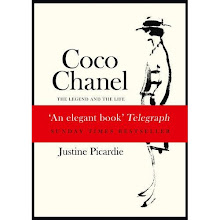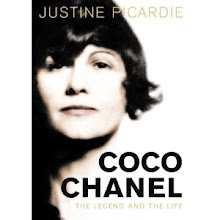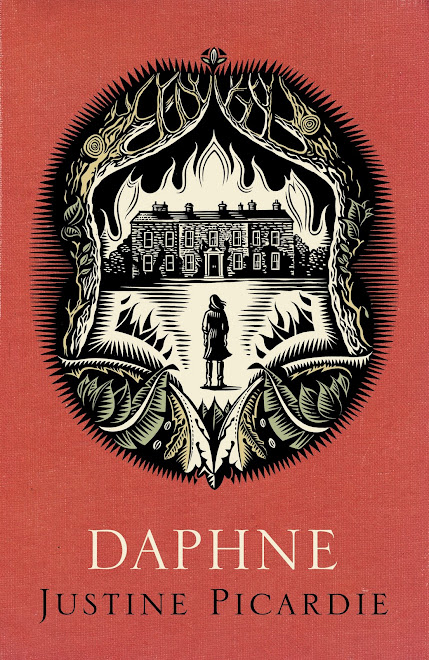
The Reverend Patrick Bronte -- who died on June 7th, 1861 -- is the subject of a new biography by Dudley Green. I just reviewed the book for the Times (it appeared yesterday, on the anniversary of his death), and here it is again, for anyone who might be interested:
What made Patrick Bronte the father of genius? It’s a question that has perplexed the biographers of his more famous daughters, from Mrs Gaskell onwards, but never fully answered. Dudley Green, a former chairman of the Bronte Society, is the most recent in a long line of biographers, though unusual in that his attention is fully focused on Patrick Bronte, the first to do so in over 40 years.
Green’s aim is explicit: to rehabilitate a man misunderstood and maligned by the Bronte myth since Mrs Gaskell published her ‘Life of Charlotte Bronte’ in 1857. But unlike Gaskell’s portrayal of Patrick as “a remote father given to eccentric behaviour and strange fits of passion”, Green believes him to have been a kindly and loving parent with “a keen interest in his children’s development and an able and faithful clergyman, who was ever sensitive to the pastoral needs of his parishioners.”
If this sounds worthy, verging on the dull, then the Patrick Bronte who emerges from the pages of Green’s biography is far more compelling. Born into a poor Irish farming family in County Down on 17th March 1777 (St Patrick’s Day), he was the eldest of ten children, and exceptionally intelligent, becoming a schoolteacher at 16, and then, with the support of his local vicar, entering St John’s College, Cambridge at the age of 25. He studied hard, winning academic prizes on his path to ordination, but also found time to serve under the future Lord Palmerston in the volunteer militia, during a period marked by fears of French invasion.
By the time of his marriage in December 1812 to Maria Branwell, Patrick was a Yorkshire curate, and already a published poet. Six children were born in rapid succession: Maria in 1814, Elizabeth in 1815, Charlotte in 1816, Branwell in 1817, Emily in 1818, and Anne in 1820. In April that year, the Bronte family moved to Haworth, where Patrick was appointed curate; his wife fell ill soon afterwards, and died of cancer in 1821.
According to Mrs Gaskell, the children’s life after their mother’s death was bleak, with some of the most vivid scenes of her book suggesting an upbringing as harsh as ‘Wuthering Heights’: “Mr Bronte wanted to make his children hardy, and indifferent to the pleasures of eating and dress… he went at his object with unsparing earnestness of purpose. Mrs Bronte’s nurse told me that one day when the children had been out on the moors, and rain had come on, she thought their feet would be wet, and accordingly she rummaged out some coloured boots which had been given them by a friend… These little pairs she ranged round the kitchen fire to warm; but, when the children came back, the boots were nowhere to be found; only a very strong odour of burnt leather was perceived. Mr Bronte had come in and seen them; they were too gay and luxurious for his children, and would foster a love of dress; so he had put them into the fire. He spared nothing that offended his antique sympathy.” Gaskell also has Patrick cutting up his wife’s silk dress, setting the hearthrug on fire and sawing up chairs in irrational fits of rage, reminiscent of Heathcliff.
Dudley Green is not the first to show this to be based on the gossip of a disgruntled servant dismissed from the Parsonage, but his rebuttal is scrupulously detailed, using the evidence of the children themselves. Whereas Mrs Gaskell told the tale that the Bronte children “had nothing but potatoes for their dinner”, Green quotes Emily and Anne’s diary on 24 November 1834: “We are going to have for Dinner Boiled Beef Turnips, potato’s and applepudding.”
None of which explains the origins of genius, but the details of Green’s biography are intriguing, nevertheless. We learn of Patrick Bronte’s encouragement of his children’s writing (he provided a wide variety of books for them to read – including volumes by Milton and Scott – along with newspapers that stimulated their avid interest in politics). Green also cites Charlotte’s school friend, Ellen Nussey, who first visited the Parsonage in 1833: “Mr Bronte at times would relate strange stories, which had been told to him by some of the oldest inhabitants of the parish, of the extraordinary lives and doings of people who had resided in far-off, out-of-the-way places… stories which made one shiver and shrink from hearing; but they were full of grim humour and interest to Mr Bronte and his children.” And while his own writing – including several published books of poetry and stories – is not of great literary merit, he nevertheless provided a clear example to his children of the pleasures and possibilities of authorship.
One might cast Patrick as a tragic figure – he survived long after his wife and his six children, all of whom died too young – yet Green’s portrait is of a stoic character, who never lost faith, serving his congregation in Haworth for forty years, successfully campaigning for their right to schooling and clean water. He died on June 7th 1861, at the age of 84, mourned by hundreds of local villagers, who knew him as far more than the father of Charlotte Bronte.
Dudley Green sees it as a measure of Patrick Bronte’s tolerance and forbearance that he had supported Gaskell in the writing of her biography, and defended her from critics afterwards, despite the inaccuracies in her account of him. Or perhaps this reveals Bronte’s own understanding of the complications of what it might mean to be a writer searching for the truth. According to Mrs Gaskell, he had encouraged Charlotte during her writing of ‘Villette’ to let the hero and heroine ‘marry and live happily ever after.’ But his own life has something of the singularity of his daughters’ fictional characters, evading conventional narratives or happy-ever-afters, expressing rage as well as piety, and seeming all the more vividly true as a result.






















